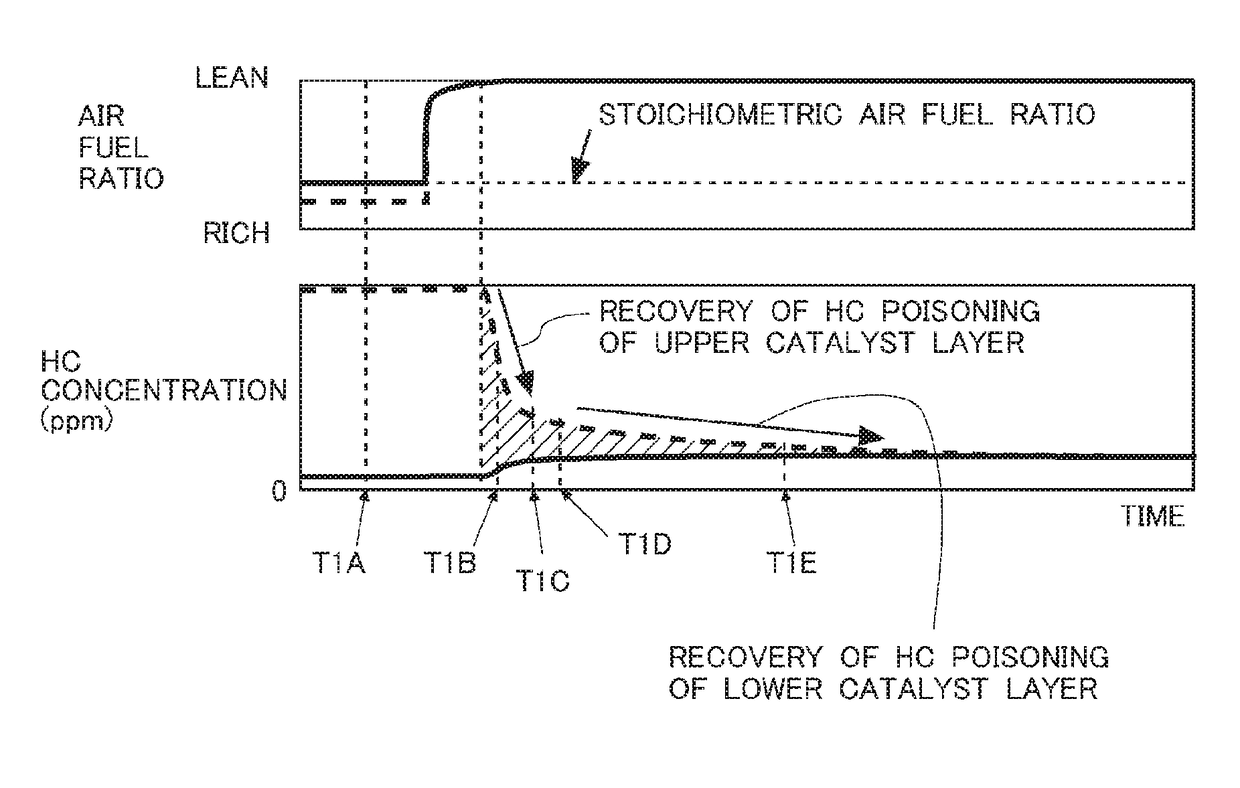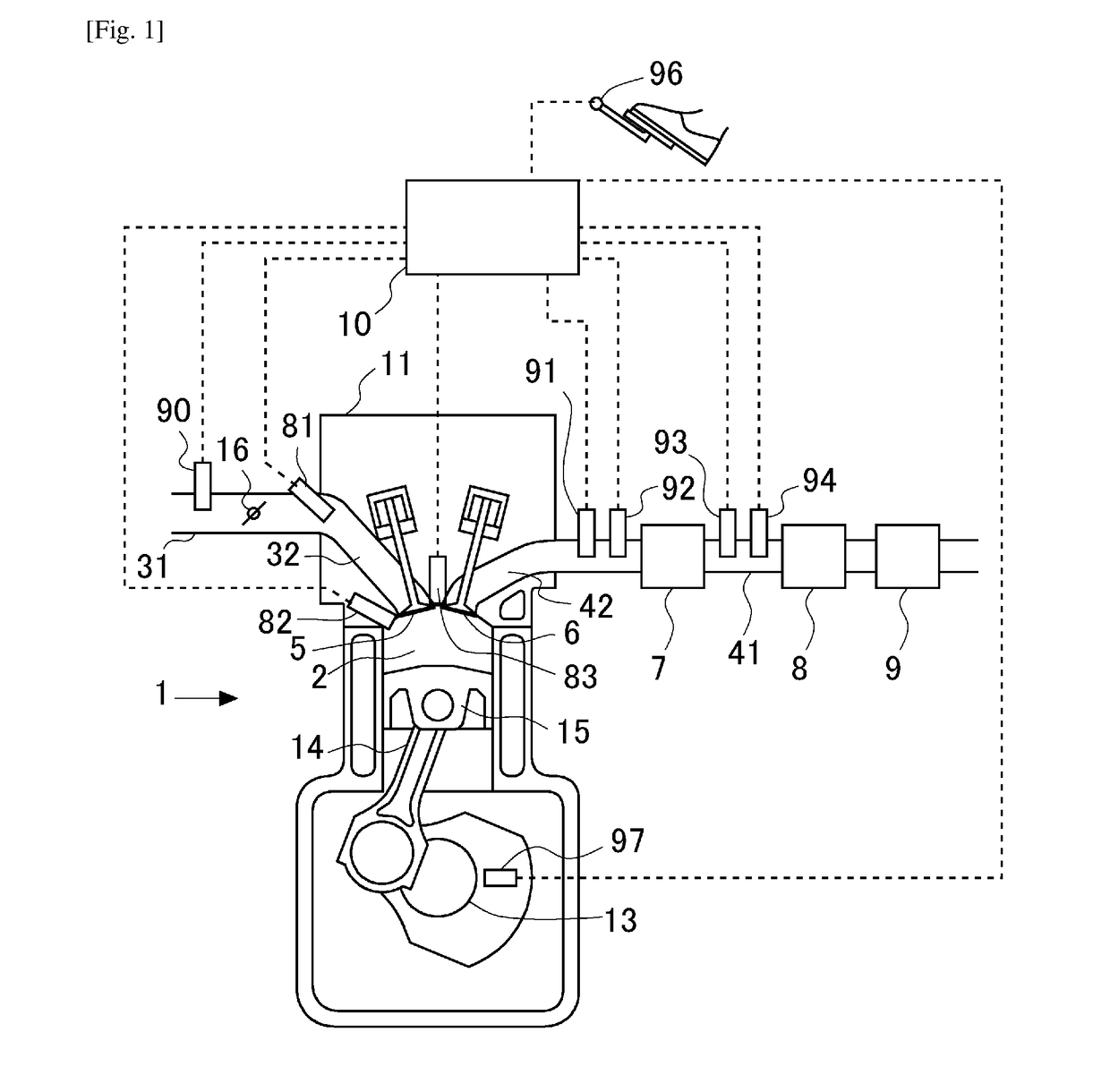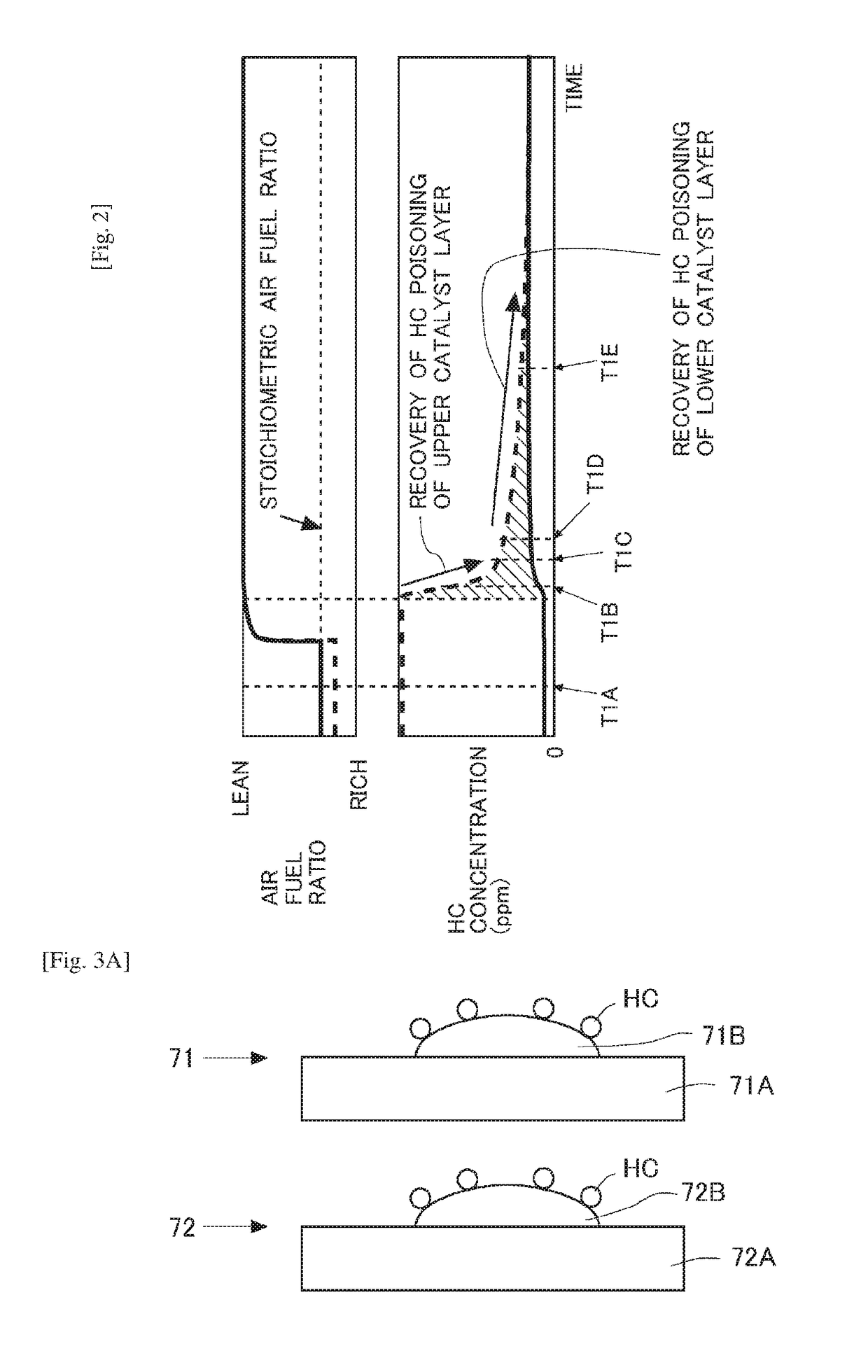Control system for an internal combustion engine
- Summary
- Abstract
- Description
- Claims
- Application Information
AI Technical Summary
Benefits of technology
Problems solved by technology
Method used
Image
Examples
first embodiment
[0097]FIG. 1 is a view showing the schematic construction of an internal combustion engine 1 according to a first embodiment of the present disclosure. Here, note that in this embodiment, in order to illustrate the internal combustion engine 1 in a simple and concise manner, a part of components thereof is omitted. The internal combustion engine 1 is a gasoline engine having four cylinders 2.
[0098]An intake pipe 31 and an exhaust pipe 41 are connected to a cylinder head 11 of the internal combustion engine 1. An intake port 32, which leads to a cylinder 2 from the intake pipe 31, and an exhaust port 42, which leads to the cylinder 2 from the exhaust pipe 41, are formed in the cylinder head 11. The intake port 32 is provided at its one end near the cylinder 2 with an intake valve 5. In addition, the exhaust port 42 is provided at its one end near the cylinder 2 with an exhaust valve 6. Here, note that in this embodiment, the exhaust pipe 41 corresponds to an exhaust passage in the pr...
second embodiment
[0216]In this second embodiment, the period of time in which HC poisoning recovery control is carried out is changed according to deterioration by sulfur poisoning of the three-way catalyst 7 as well as deterioration by heat. The other devices, parts and so on are the same as those in the first embodiment, so the explanation thereof is omitted.
[0217]Here, when deterioration by sulfur poisoning or deterioration by heat takes place in the three-way catalyst 7, the oxygen storage capacity of the three-way catalyst 7 (this also may be an amount of oxygen which can be stored in the three-way catalyst 7 as much as possible) will change. For this reason, an amount of oxygen supply required for the recovery of HC poisoning (this also may be a period of time in which the air fuel ratio is made to a lean air fuel ratio, or may be a degree of leanness) changes. By carrying out the HC poisoning recovery control according to the deterioration by sulfur poisoning or the deterioration by heat, it ...
third embodiment
[0248]In this third embodiment, the time to switch from the first operation to the second operation is decided based on the concentration of NOx in the exhaust gas at the downstream side of the three-way catalyst 7. The other devices, parts and so on are the same as those in the first embodiment, so the explanation thereof is omitted.
[0249]Here, in cases where the time to switch from the first operation to the second operation is later than the optimal time, there is a fear that the first operation may be carried out for a period of time longer than needed. When the period of time in which the first operation is carried out is longer than needed, the amount of NOx stored in the NSR catalyst 8 increases. For this reason, the amount of NOx released from the NSR catalyst 8 during the second operation increases, so that the amount of ammonia consumed in the SCR catalyst 9 at the time of carrying out the second operation will increase. On the other hand, in cases where the time to switch...
PUM
 Login to View More
Login to View More Abstract
Description
Claims
Application Information
 Login to View More
Login to View More - R&D
- Intellectual Property
- Life Sciences
- Materials
- Tech Scout
- Unparalleled Data Quality
- Higher Quality Content
- 60% Fewer Hallucinations
Browse by: Latest US Patents, China's latest patents, Technical Efficacy Thesaurus, Application Domain, Technology Topic, Popular Technical Reports.
© 2025 PatSnap. All rights reserved.Legal|Privacy policy|Modern Slavery Act Transparency Statement|Sitemap|About US| Contact US: help@patsnap.com



